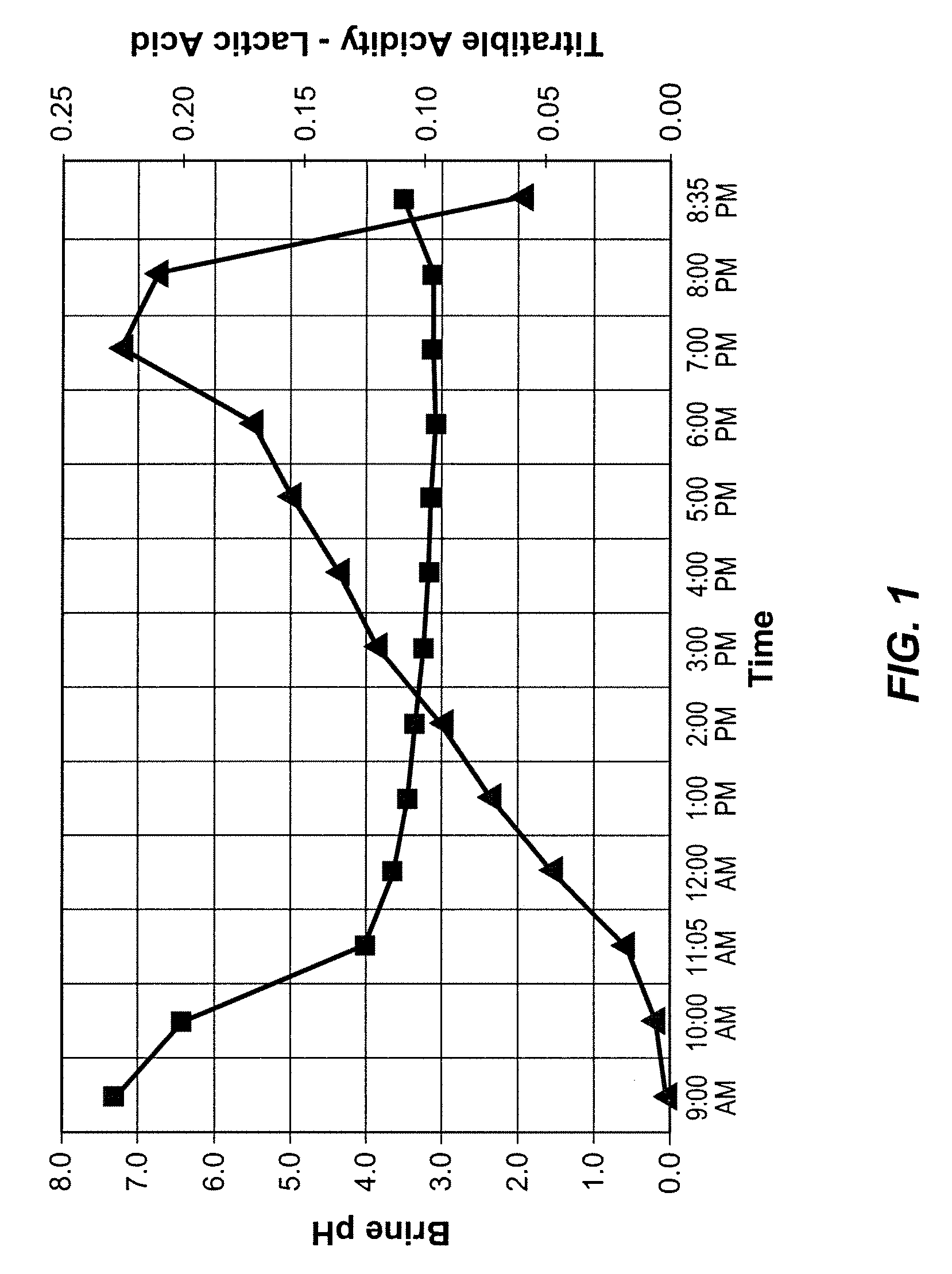Casings for Foodstuffs
a technology for casings and foodstuffs, applied in the field of casings for foodstuffs, can solve the problems of uneven thickness of natural casings, inconvenient cleaning and preparation of natural casings, and insufficient supply of natural casings
- Summary
- Abstract
- Description
- Claims
- Application Information
AI Technical Summary
Benefits of technology
Problems solved by technology
Method used
Image
Examples
Embodiment Construction
[0044]A collagen casing of the present invention is prepared by admixing an aqueous slurry of collagen fibers and an optional polysaccharide, e.g., an alginate, extruding the resulting mixture to the desired form, and then setting or hardening the mixture, typically by use of a brine.
[0045]In coextrusion processes, the length of a single sausage production run is about 16 to about 144 hours. Because the brine system is essentially a captive, recirculated system, these extended run times lead to increased titratable acidity levels which results in casing performance issues. In particular, the recirculated brine extracts acids from the collagen gel and the pH of the brine is reduced. When the brine pH is sufficiently lowered, the collagen casing is softened and degraded. Therefore, the present invention is directed to maintaining a brine pH above about 3 and a titratable acidity (as lactic acid) below about 0.2 mg / ml for an entire extended production run.
[0046]The main function of the...
PUM
 Login to View More
Login to View More Abstract
Description
Claims
Application Information
 Login to View More
Login to View More - R&D
- Intellectual Property
- Life Sciences
- Materials
- Tech Scout
- Unparalleled Data Quality
- Higher Quality Content
- 60% Fewer Hallucinations
Browse by: Latest US Patents, China's latest patents, Technical Efficacy Thesaurus, Application Domain, Technology Topic, Popular Technical Reports.
© 2025 PatSnap. All rights reserved.Legal|Privacy policy|Modern Slavery Act Transparency Statement|Sitemap|About US| Contact US: help@patsnap.com



